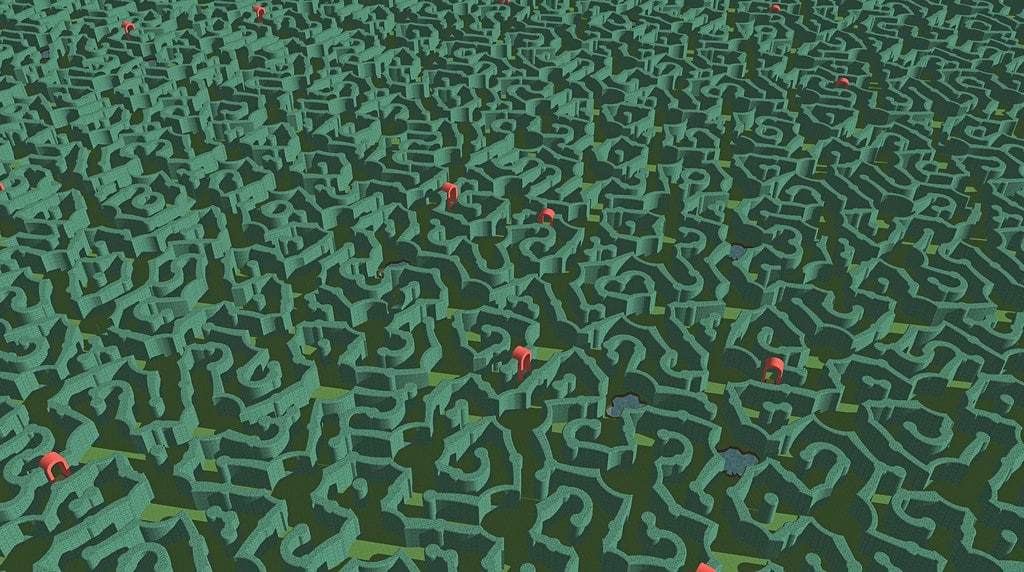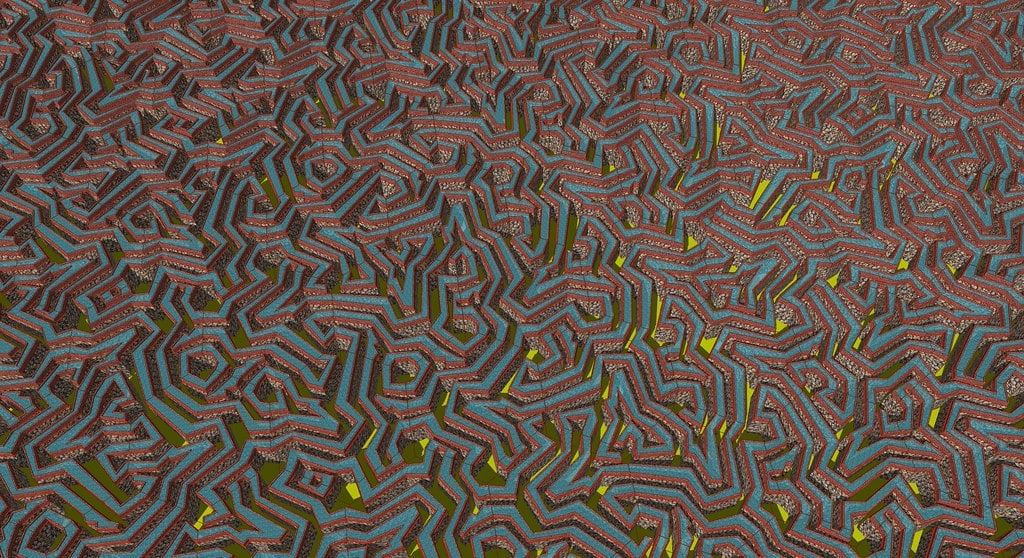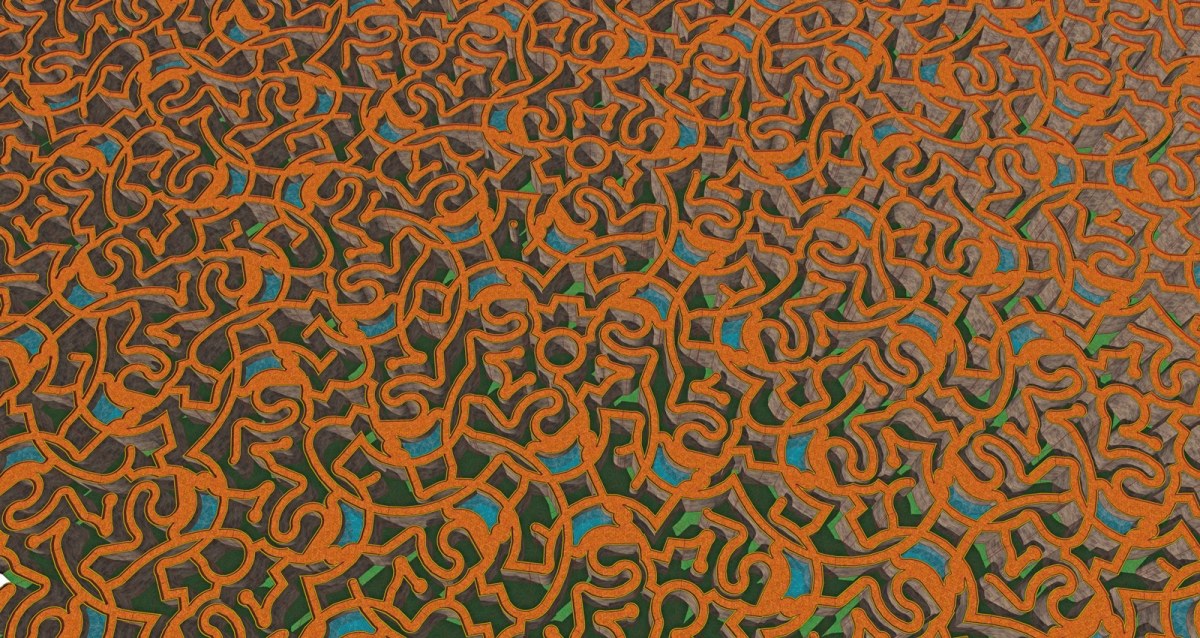If music is about sounds coordinated in time, moving from the present moment to the future until there is nothing left, then perhaps ambient music is the archetypal music. At stake are not notes or rhythms, but time and space. Sound simply unfolds; the abstract structures it defines are not fleeting musical forms, but entire worlds.
Ambient music has moved far from the ground that Brian Eno staked out with his “Music for Airports” (1978). It has become an enormous, though still underground, global genre. Exploring a site like Bandcamp means discovering an overwhelming number of quality recordings that populate ambient and its sub-genres (dark, cinematic, field recordings, and so on). As composers have done since Renaissance polyphonists wrote masses based on the “L’ homme armé” tune, contemporary classical musicians are now drawing on the ambient music they grew up with and folding it into the music they are composing.
Ambient music might even be compared to classical music’s pastoral mode, updated for the 21st century. Beethoven, Ives, and Ralph Vaughan Williams represented the experience of nature through orchestral works. Now John Luther Adams and Anna Thorvaldsdottir translate the processes of nature through music, as do Kate Carr, Annea Lockwood, and Alvin Lucier. Along with their contemporaries Ellen Akbro, Liisa Hirsch, Daniel Wohl, Brian Harnetty, and Christopher Cerrone, Adams and Thorvaldsdottir compose steady-state universes that are formally opposed to much of classical music. Ambient music may have a formal beginning and end, a quality of transformation; most doesn’t. The quiet piano phrase at the start of “Music for Airports” is just there. It has no structural or rhetorical purpose other than as a sound that appears and then drifts away, just another random facet that makes up Eno’s imaginary place.
The sonic beauty of so much ambient music is consonant with the values of classical music, especially those of the romantic era that came out of Edmund Burke’s idea of the sublime. Ambient is often as haunting and uncanny as it is gorgeous. But the idea of music that eschews gestural rhetoric—there are no statements, no returns, no developments—is still highly experimental, avant-garde territory in the current state of the classical tradition. This is what some of our most compelling younger voices, who grew up with ambient, are now exploring through the prism of classical music.
Ellen Arkbro explores alternate tunings with her drone-based soundscapes. Liisa Hirsch’s pieces are based around the overtones that shimmer off piano strings. Both composers work with the ubiquitous instruments of the orchestra and chamber ensembles, but they occupy a unique space outside the ongoing retrenchment, mainly happening in North America, of classical music into neo-romantic expression and drama and the marking of audible beats and regular rhythms. And though their music may still strike listeners as out of the ordinary, they are working firmly within the classical tradition and taking advantage of compositional ideas available to everyone, even if they are not promoted within the conservatories and academies.
John Luther Adams’s music is explicitly about the environments—literal ambience on a large scale—that surround him, and, except for “Songbirdsongs,” his work is impressionistic rather than pictorial. Impressionistic, not impressionism; his “Become Ocean” is a response to “La Mer” only in that it is about huge bodies of water. Debussy could gaze out at the sea and feel the sensual pleasures of wind and sunlight glinting off the waves, but this is the 21st century, and so Adams sees newly melted glacial water cascading into the seas, eventually drowning coastal cities. That “Become Ocean,” and its newly recorded follow-up, “Become Desert,” have beautiful sonic power is sublime. Adams hasn’t made facile propaganda: he’s looked at the world and found there will be great beauty in it after nature has wiped us out of the way. He is not dispassionate about humanity; he’s passionate about the earth’s ambience.

If Adams used the standard techniques of development and narrative design, his work would ordinary. But stepping outside linear time and making an independent dimension for the musical experiences means the sound itself, not the story, has to be compelling. Although his means may seem simple, this is difficult to do: simplifying concept and materials while making things interesting across 45 minutes is quite a task. But that’s what ambient music does, and embracing the possibilities of the genre means opening the door into a world of non-rhetorical yet deep, complex, organic satisfactions.
Anna Thorvaldsdottir has a more avant-garde profile than Adams, but her music might have a yet more instinctive grip on the listener, even with its stranger sounds. She is a composer of organic processes, making music that grows rather than develops. “Some of the features that I associate with ambient music include atmospheres as ‘foundations’ and ‘organic’ progression and structure,” she says. “When I am making music I do not consciously think about these qualities in terms of ambient music, as a style or genre, but I definitely do relate to the sense of space, and affinity for drones, sustained atmospheres, organic progressions and flow. This is something I work with quite naturally in my music.”
Hearing pieces like her “Ró” and “Aeriality” is not like experiencing a series of declaratory statements and ensuing elaboration. Instead, you witness a vision coalesce. The feeling is like driving through fog toward a distant, shrouded shape, increasing proximity revealing one detail after another. Thorvaldsdottir says, “One of the ways that the shared affinities [with ambient music] sometimes come through in my music is through atmospheric foundations and organic structures and progressions. And I often like to construct complex foundations of that sort, where various layers of details weave together into an organic, developing whole.”
Although she has used signal processing at times, Thorvaldsdottir, like Adams, works with acoustic instruments. Daniel Wohl uses electronics and acoustic instruments together as equal elements. The sound he creates is a seamless emulsification of the two, like Evan Parker’s Electro-Acoustic Ensemble in experimental jazz, with tactile quality that intertwines with a sense of time as an extended stillness. He thinks of the use of ambient music as an experiential one, different from what he calls the “directed quality, a part of minimalism,” where the music tends to dictate how the listener is supposed to respond. Wohl goes even further, with a focus on recordings, like “Holographic” (2016) and this year’s “État,” rather than concerts. “When you come to a performance, your sense of time is directed,” he tells me, by the starting time and the intermission. “Talking about albums, not performances, I try and create one general mood or world that the piece stays within.” Wohl aims to compose “without emotional highs and lows, or surprises, or provocations. That’s not what this world is all about.” Instead his aim is to fill the space “with a fine mist of music.”
Hearing Adams or Thorvaldsdottir in concert, or listening to one of Wohl’s records, carves out a timeless ambient space in the larger context of the now. Yet the places of ambient music don’t have to be tethered to the present, even though that’s when they are heard—they can be a vision of the future or an evocation of the past. The composers Brian Harnetty and Christopher Cerrone, for instance, use field recordings to make musical experiences that happen in real time, while bringing the historic and personal past into the present.
Memory adds expression and emotional depth to ambient music. It connects the listener to the composers’ art through common experience—the sound of crickets, say—or it places others’ memories into our own minds, like those of Shawnee, Ohio, a mining town that provides the title for Harnetty’s most recent album. For this and his previous record, “Rawhead & Bloodybones,” Harnetty took recordings of people telling stories, and then wrote new music to accompany these literal voices from the past. The effect is to make the past quasi-alive, like a sepia-tinted photograph or a found Polaroid. Harnetty found his way to this unique style in part through David Toop’s book Ocean of Sound: Ambient sound and radical listening in the age of communication. That book “really broadened my sense of ambient,” he tells me, as a way to make a “more static place, a landscape” of sound.

Thinking in terms of ambient helps Harnetty “get out of the way and leave things alone. You’re not pushing things around, you’re not doing development.” As with Daniel Wohl, it’s also a way to offer a rich emotional experience to the listener without signaling how they should respond. “Sampling the past,” Harnetty says, “is at the center of everything, and I’m trying to avoid a sense of nostalgia.” In the strictest sense, Harnetty is not sampling, which is a type of post-modern detachment (used, interestingly, by the ambient musician Biosphere for his album “Shenzhou”—the music is built from loops sampled from recordings of Debussy’s orchestral music). Harnetty instead uses archival field recordings which are directly engaged with the past and the people involved. “It all messes with your sense of time,” he tells me.
For Cerrone, ambient is a “process music.” In pieces like “Double Happiness” and “Memory Palace” (the latter can be heard on “Beyond,” a 2017 album from the Los Angeles Percussion Quartet, on which they also play Thorvaldsdottir’s “Aura”), Cerrone integrates field recordings with the live musicians. The sounds of the Italian countryside in “Double Happiness,” and the crickets heard at the start of “Memory Palace,” are a way to hear Cerrone’s own memories, and, he says, “maybe…open up a space for the audience.”
The non-intrusive approach of this new generation of composers may still feel radical and unusual in the classical tradition, but it is intuitively familiar for anyone who loves ambient music. “I like to create the feeling of spaciousness,” Cerrone tells me. “I want things to move forward, but I want to give the audience space.” This is the space to be out of time, to inhabit the universe that ambient music makes within our own. ¶

